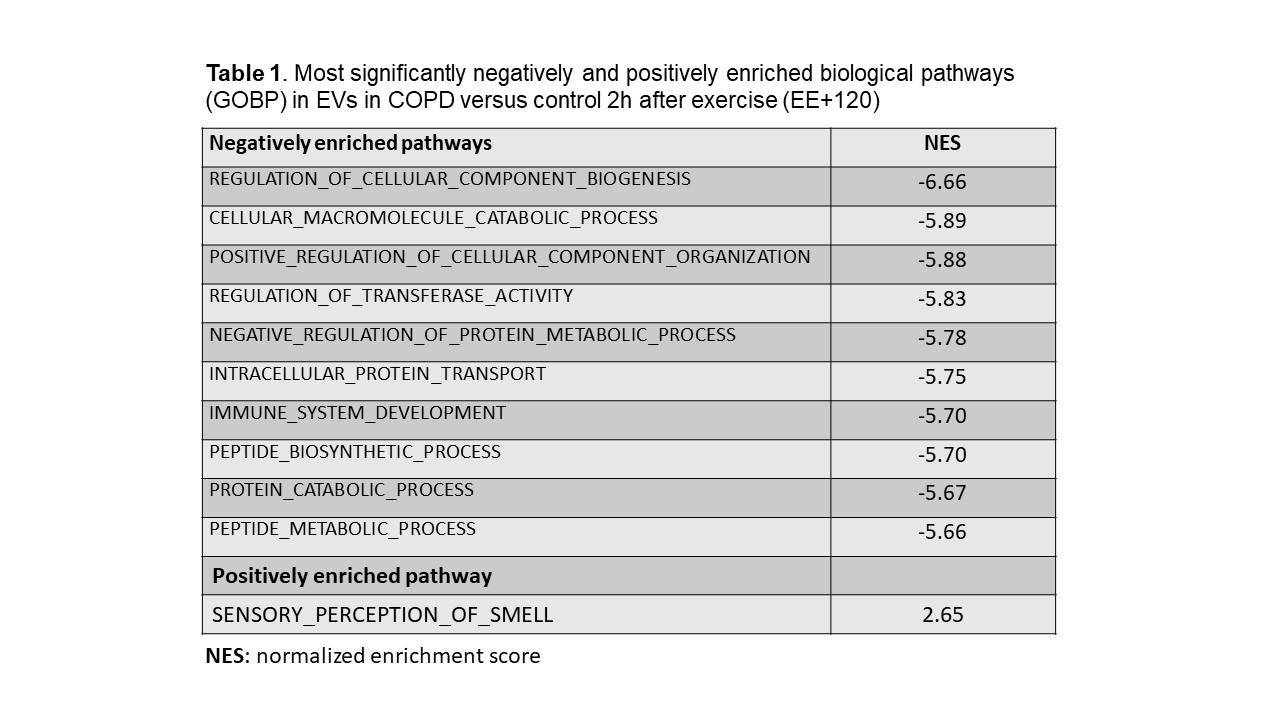Abstract
Introduction Pulmonary rehabilitation (PR) reduces COPD exacerbations, hospitalization and death. Exercise-induced changes in extracellular vesicles (EV) may play a role in mediating these effects. Aim To investigate effects of exercise on EV RNA cargo in COPD patients and controls. Methods Former smokers (6 COPD; 5 age-matched controls [CON]) performed high-intensity interval cycling (10x [1-min 120% peak ramp-incremental work rate, 2-min recovery]). Serum EVs were isolated at baseline (BL), end exercise (EE), and after 30 (EE+30) and 120 min (EE+120) of rest. Differential gene expression and biological pathway enrichment were measured in EVs (adj.p<0.05). Results EV concentration and total RNA were lower in COPD (p<0.03); exercise had no effect. Protein-coding and long noncoding RNAs (lncRNA) with >80% coverage increased after exercise in both groups. At BL, 3 genes were differentially expressed between COPD and CON, increasing to 124 genes by EE+120. 1,755 biological pathways were differentially enriched by EE+120; 1,754 of these were negative in COPD (Table 1). Conclusion Exercise increased protein-coding and lncRNA in circulating EVs in COPD and CON, but pathways involved in metabolic, catabolic, and immune system regulation had up to ~6-fold greater enrichment in CON. Exercise induced greater EV-mediated intercellular communication in controls than COPD. Support TRDRP 28FT-001.
